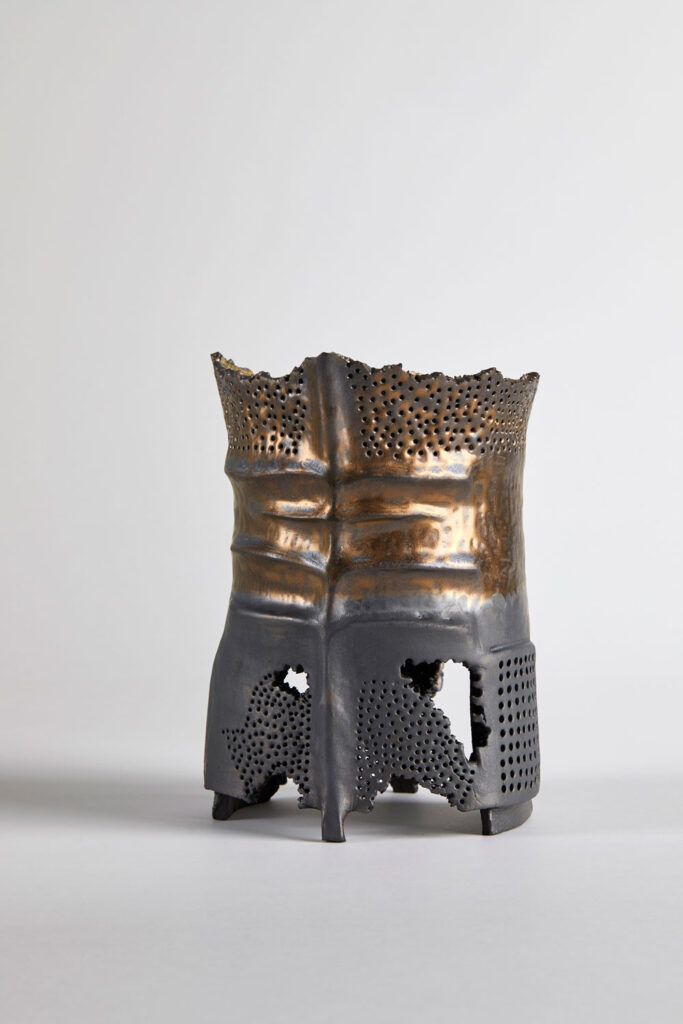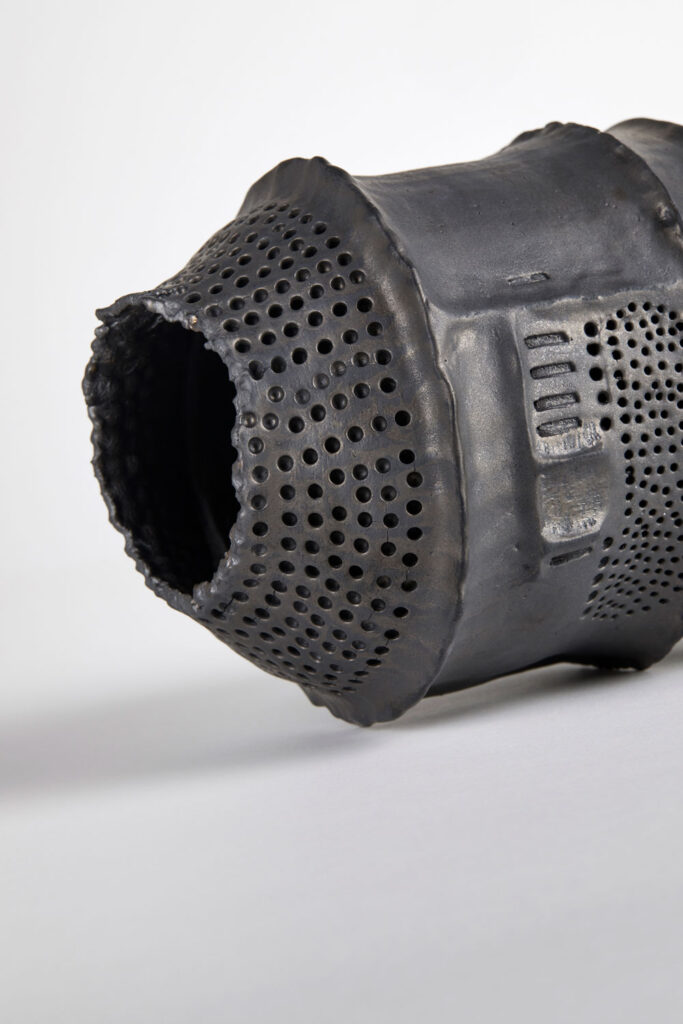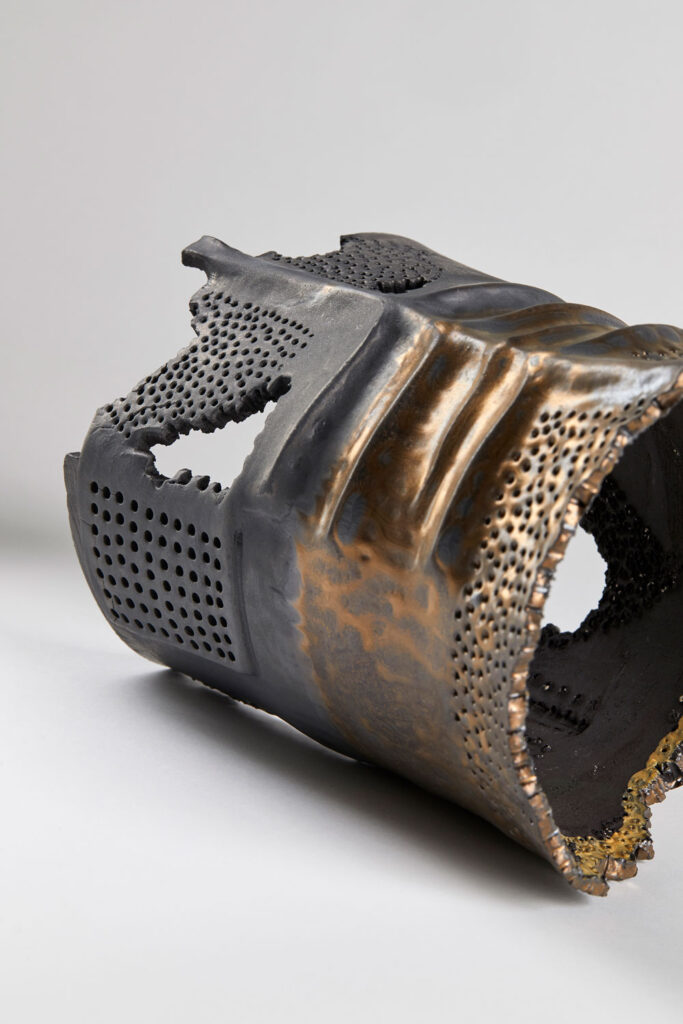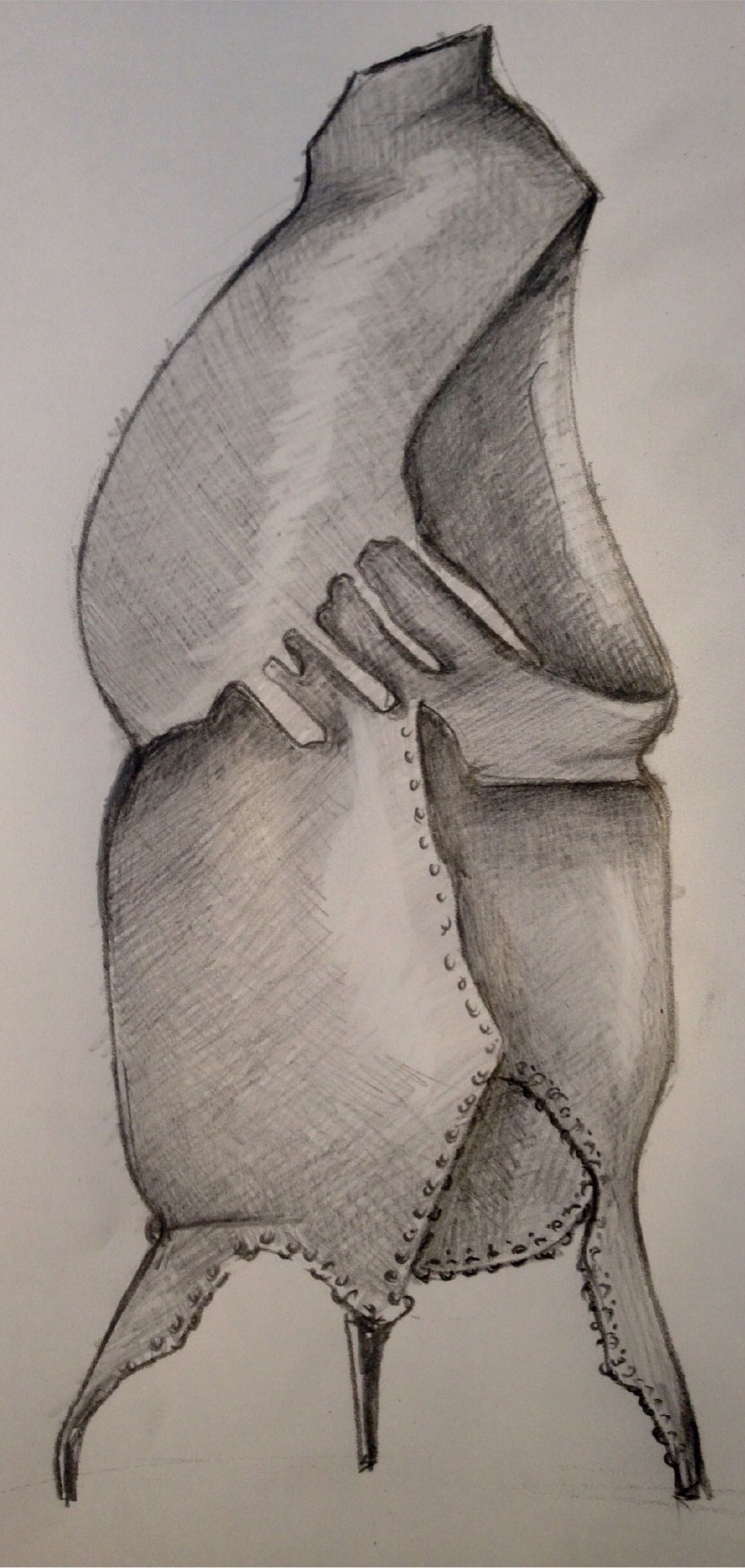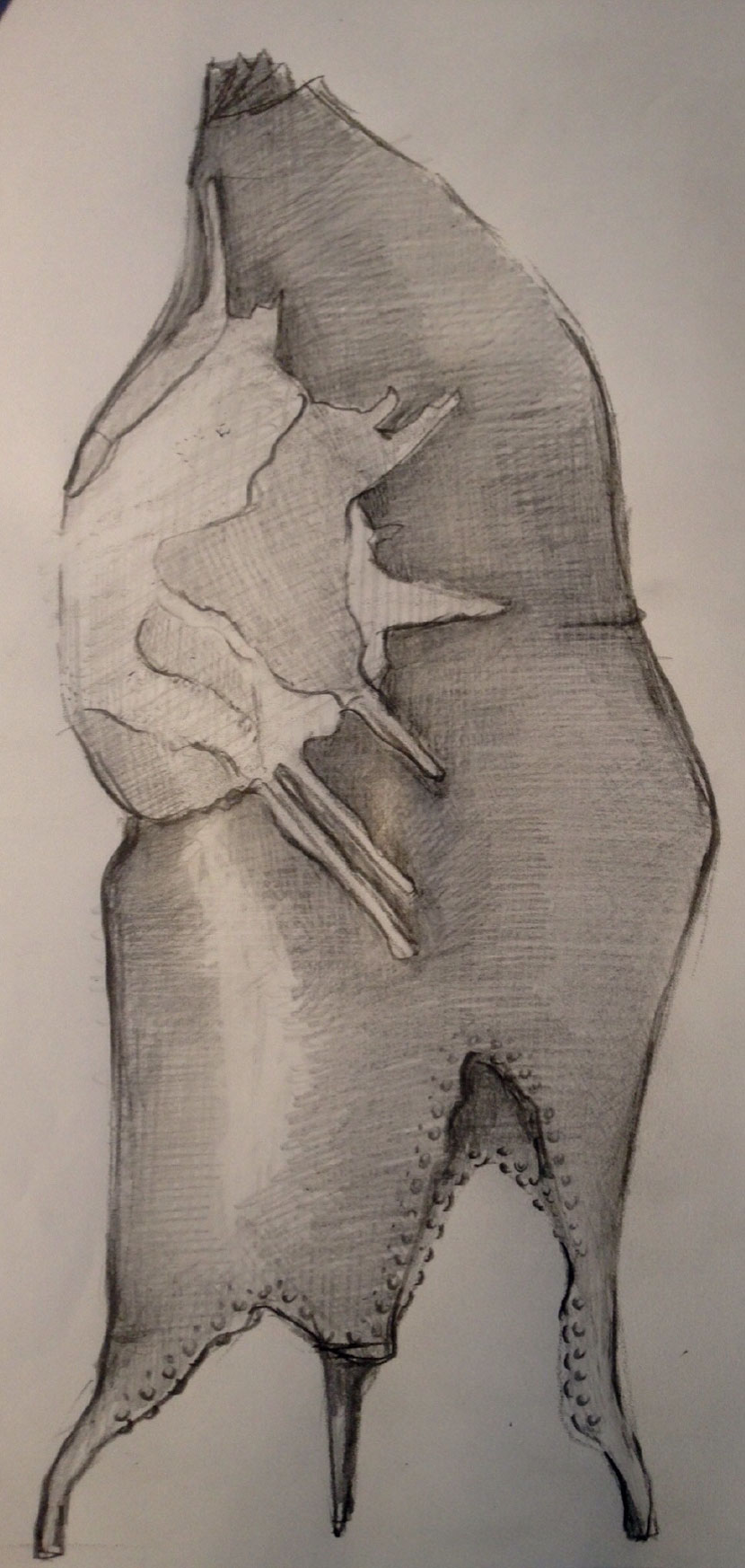CATAPHRACTS
Mirka Drapaniotou’s Cataphracts series draws upon the powerful imagery of Byzantine cataphracts—heavily armoured cavalrymen whose resilience and discipline were both a physical and mental triumph. These warriors embodied a unique duality: they were protected by armour that fused seamlessly with their bodies, yet they operated within strict limits on the battlefield. Drapaniotou translates this concept into her ceramics, where the inherent vulnerability of clay is tested against the artist’s command over the material.
Drapaniotou’s technique in Cataphracts is a signature element of her practice. She meticulously forms thin layers of clay, subjecting them to a process she calls “traumatizing the material,” pushing the clay to its limits with intentional piercings. These delicate perforations challenge the structural integrity of the ceramic, testing how much it can endure before reaching the brink of collapse. This act of piercing reflects the tension between durability and fragility, mirroring the armour’s role as both a shield and a reminder of its wearer’s human limitations.
The works themselves are articulated, composed of multiple pieces stacked atop one another in a state of ambivalent balance. This layered arrangement allows each piece to function as part of a larger, transformable entity—an articulated structure that shifts its form while maintaining a sense of precarious stability. Drapaniotou plays with this duality of transformation, creating pieces that seem at once solid and ever-changing.
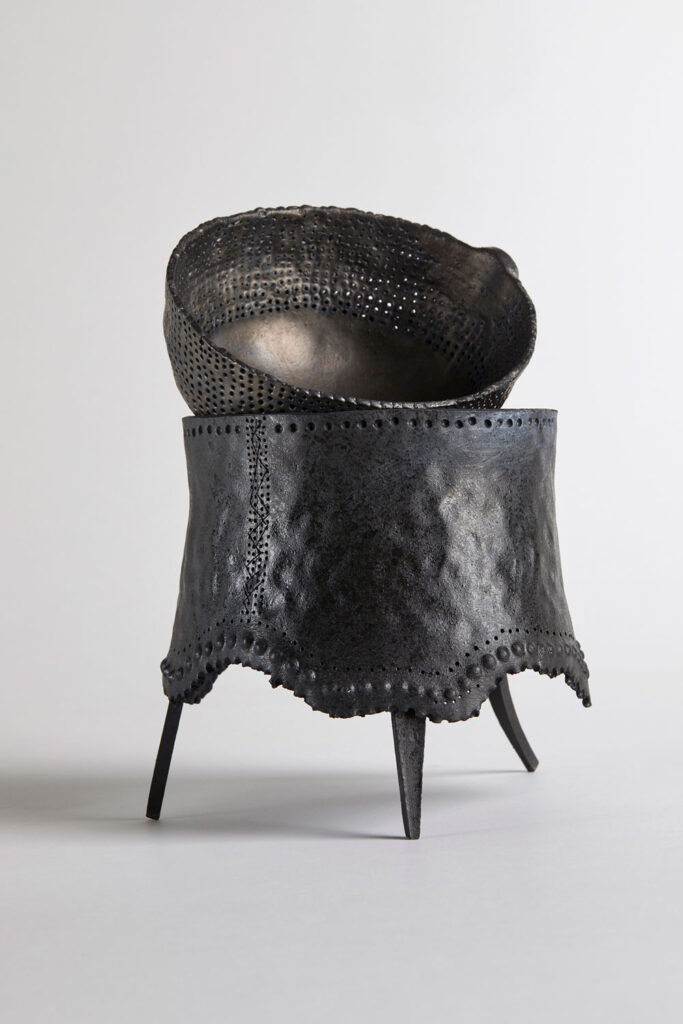
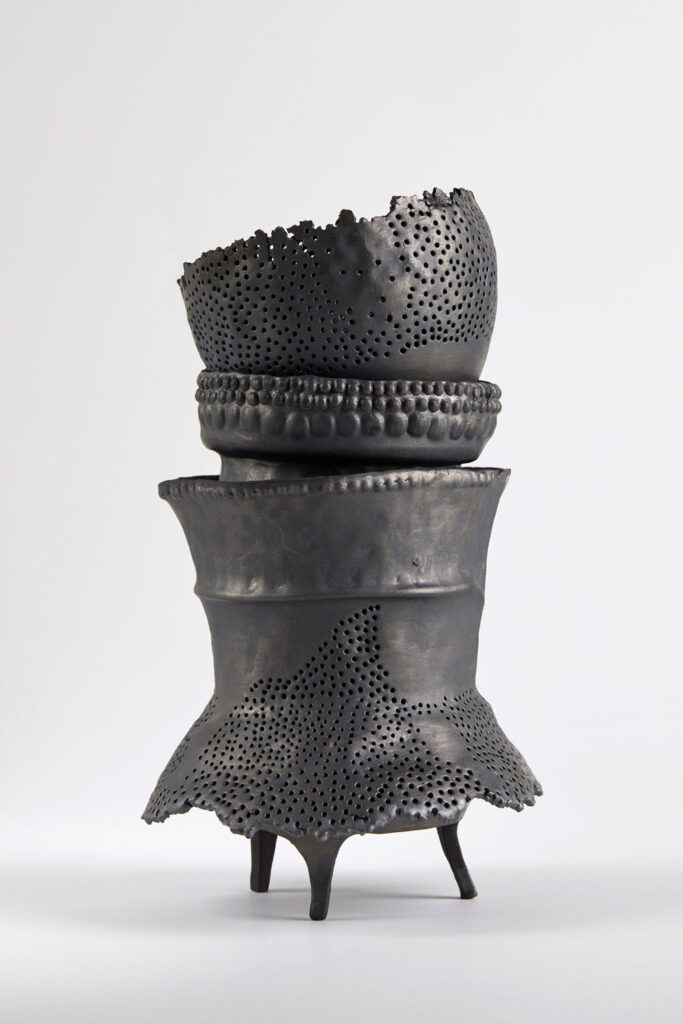
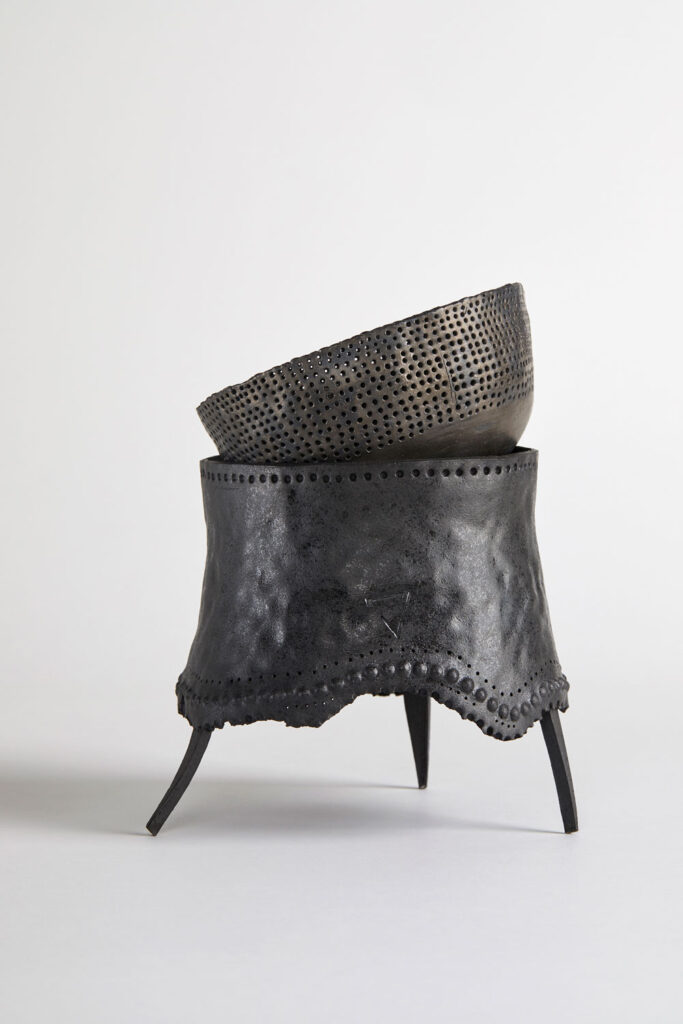
A fundamental tension in Cataphracts is the exploration of functionality versus dysfunctionality. While these ceramic forms bear the shape of vessels, their pierced surfaces make them impractical for holding liquids. Drapaniotou deliberately challenges this core aspect of ceramic tradition, pushing against the idea that a vessel’s purpose is to contain. This series invites viewers to question the limits of function in ceramic art, celebrating the form itself even when its practical use is denied.
The ritualistic aspect of Cataphracts also brings a deeper layer of meaning. These pieces evoke the idea of ceremonial containers, capable of holding or offering food, drink, or symbolic sustenance. Like the cataphracts that protected and carried their own weight, Drapaniotou’s works suggest both the act of holding and the paradox of release.
In Cataphracts, Drapaniotou masterfully fuses strength with sensitivity, discipline with creativity. This body of work is a tribute to the artist’s ability to challenge the boundaries of her medium, transforming clay into a vessel of both protection and fragility, permanence and transformation.
